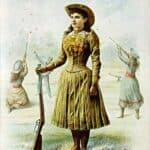
Introduction to the .40-70 Cartridge
The tale of the .40-70 cartridge is one that reeks of the wilderness, of an era gone by, where frontiersmen and buffalo hunters relied on firepower that made a difference between dinner and going hungry. Rooted in the American West, the .40-70 is a piece of shooting history that still resonates in the chambers of a handful of specialized rifles.
Specifications: Down to the Nitty-Gritty
Let's get into the brass tacks here. When we talk about the .40-70, we're actually looking at two main variations: the .40-70 Sharps Straight and the .40-70 Sharps Bottleneck. Each has its own set of measurements and performance criteria.
.40-70 Sharps Straight
- Cartridge Overall Length: Approximately 2.25 inches
- Case Length: 1.815 inches
- Bullet Diameter: .403 inches
- Rim Diameter: .628 inches
- Neck Diameter: .440 inches
- Base Diameter: .506 inches
.40-70 Sharps Bottleneck
- Cartridge Overall Length: Approximately 2.1 inches
- Case Length: 1.750 inches
- Bullet Diameter: .403 inches
- Rim Diameter: .628 inches
- Neck Diameter: .440 inches
- Base Diameter: .505 inches
Powder Loads
Black powder was the traditional propellant, with smokeless powder coming into the picture much later. Black powder loads ranged from 65 to 70 grains for the straight case and 60 to 65 grains for the bottleneck case. Smokeless powder loads are significantly lighter and vary based on the type of powder and bullet weight.
The History: Where the Iron Meets the Earth
Originating in the late 19th century, the .40-70 was conceived for single-shot buffalo rifles, chiefly the Sharps Model 1874. These big-bore cartridges were designed to deliver hard-hitting performance at extended ranges. It was the days of buffalo hunting, and a man wanted a round that wouldn’t just tickle those big brutes; he needed something that would knock them flat.
Performance: Does it Walk the Walk?
If you’re after accuracy and good penetration, then the .40-70 delivers on both counts. With a 330-grain bullet and a muzzle velocity of around 1,300 feet per second, it has the chops to take down game cleanly at moderate ranges. For longer distances, the round tends to lose steam, but within its effective range, it’s a force to be reckoned with.
Firearm Partnerships: The Old Comrades
Chief among rifles chambered for the .40-70 were the Sharps 1874 and the Winchester Model 1885. The Sharps 1874 was the go-to for buffalo hunters and long-range target shooters. On the other hand, the Winchester 1885 was a favorite among the discerning enthusiasts who fancied themselves skilled marksmen. These guns were built to handle the stout recoil and deliver the accuracy needed for their tasks.
Evolution and Current Use: From Frontier to Niche
The .40-70, like many of its contemporaries, had a short stint in the limelight. As the buffalo herds dwindled and bolt-action rifles chambered in smaller, faster rounds came onto the scene, the need for the big-bore black powder cartridges waned. In today's world, it’s a specialized round, often used in vintage single-shot rifles for nostalgic hunting trips or shooting competitions that honor the past. The .40-70 is not your everyday cartridge; it's a historian's delight and a traditionalist's dream.
What has succeeded the .40-70? Well, in terms of pure ballistics, cartridges like the .308 Winchester and the .30-06 Springfield have eclipsed it in performance and versatility. But don’t let that fool you into thinking the .40-70 is a bygone relic, gathering dust in forgotten armories. It has its own place, a small but vibrant niche among those who like their shooting with a side of history.
As for the current use, there's a good deal of interest among handloaders and vintage firearms collectors. Custom ammunition makers offer rounds for those who don't handload, and bullets ranging from 260 to 330 grains are available for the truly dedicated. Whether it's hunting, target shooting, or reenactments, the .40-70 still has enough gumption to leave its mark.
So, the next time you hear the crack of a Sharps 1874 echoing in the distance, you just might be listening to the voice of history, speaking through a .40-70 cartridge. And it’s a voice that still has something powerful to say.
Read more about this and other cartridges here:

If you know of any forums or sites that should be referenced on this listing, please let us know here.



